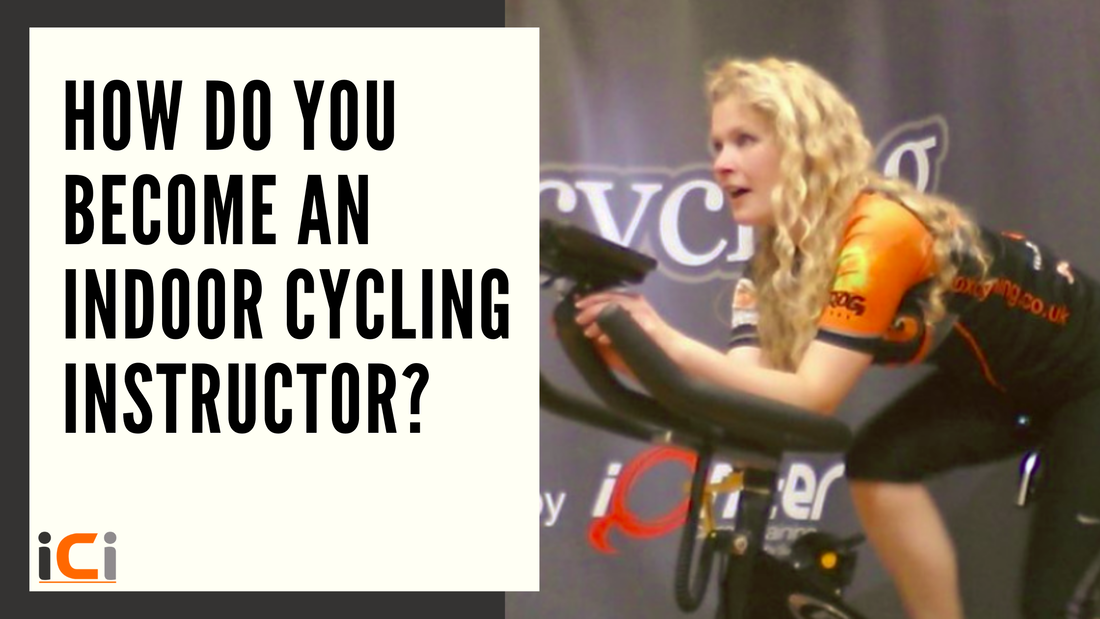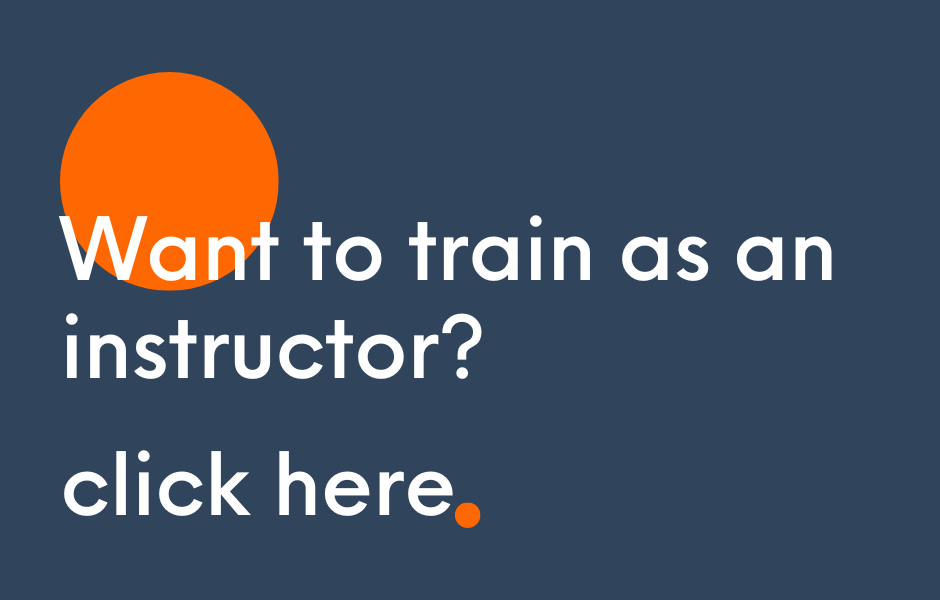- ICI staff There's a limit, but the length of time varies depending on several factors.
Factors That Affect Cycling Endurance The length of time you can cycle without rest depends on several factors, including:
0 Comments
How do you become an indoor cycling instructor?It's just pedalling and talking, right?
A good instructor will make it look effortless (except for the sweat), but what makes a good instructor, and how can you be one? What makes a great indoor cycling instructor All instructors should be able to deliver safe and effective classes, which means they should understand and be able to apply principles of anatomy, physiology and sports science to help riders get the most out of their sessions. This knowledge is essential to avoid injury - but effective workouts don't just happen. What is immersive indoor cycling?'Immersive' fitness is becoming more of a thing. Most people are familiar with the traditional studio setup where there is a group of bikes in a studio space and riders follow directions from an instructor. The immersive element is the addition of more tech.
Some studios now have large screens which may feature CGI rides or cinematic rides and the class follows along - often with an instructor as well, but not always. Much progress has been made to make indoor cycling more effective and so modern studio bikes tend to be better equipped and have metrics such as heartrate and power on them, and by using a heartrate strap you can track the intensity of your ride. How many shoes do I need for my indoor cycling studio?You'll be pleased to know that you don't need any!
Why? Personal preference Although some studios will provide these shoes, it's not common practice (for good reason, as you'll see) - and there's a risk there's that 'bowling alley' experience where actually sliding your feet into some secondhand already-sweated-in shoes is just what you don't need after a tough day at the office when you're ready to unwind (and sweat). OK it's not as bad as borrowing someone's toothbrush (sorry), but it's not far off. New riders When new riders arrive, they're frequently low in confidence, and it might be years since they were last on a bike (if at all) and probably they've heard horror stories of indoor cycling (they're as prevalent as childbirth horror stories, due to low quality instruction).
What indoor cycling bikes do you recommend?This is a question we get asked a lot. And the answer isn't necessarily what you might think. We had an email from an ICI graduate and she said: "I have a quick question regarding bike choices as I have a friend who is looking to expand their gym to include a cycling studio. I’ve ridden Keiser bikes but they don’t do speed and the fly wheel is quite small so you never cover much distance. Do you have any recommendations?" I’d say that the major thing isn’t the bikes. There are a lot of studios with great bikes but the instructors have no idea what they’re doing, and so that asset is wasted (which if you bought the nice, expensive bikes, is heart-breaking!) First up, get instructors knowledgeable enough to run a proper class. Then you have to think about budget. There’s a studio in Cornwall which has very VERY basic secondhand bikes, but their instructors are really good, and they’re now thinking of upgrading the studio to have MyZone heartrate training, which I’d say is really the next thing to think about because you can use it for all types of classes, not just indoor cycling; it’s great for keeping members engaged, great for helping them to stay motivated to get more results – and it’s trackable so personal trainers and instructors can keep in contact. And it provides an accuracy that a lot of bikes just don’t have. Regarding bikes; there’s so much to look for, it can be a bit confusing. There are some metrics that bikes might have that aren’t that helpful – distance pedalled, speed, and time spent pedalling, and probably calorie burn are all metrics I’d like to see deleted from bikes, because they just don’t help. They’re usually all massively inaccurate, PLUS the distance travelled/speed thing usually has more to do with cadence than resistance – which means that if you have a competitive bunch of riders they’ll take all the resistance off and pedal at crazy cadences just to clock up the miles the quickest. It’s not good. It’s best to look for bikes that have a belt rather than chain drive. This means less maintenance. Wattbikes are nice, but very high maintenace because they’re like pianos when you move them and have to be ‘tuned’ each time. If you have a good cleaning routine in the studio, then these bikes are going to be move a lot. Plus you'll need Wattbike specific servicing. Weigh up the pros and cons - they're really nice bikes. For more on the details, we have a blog post here. It’s about secondhand bikes specifically, but it has some important bits in it. You know that we love the BodyBikes. They’re lasting well, and the maintenance is low because all the complicated stuff is in the app. They major on measuring power, cadence and heartrate – and you can record your sessions and share them (if you’re feeling braggy) from your phone to social media. But these are at the higher price end. BH bikes are good – you have to buy them by the pallet (I think 4 bikes at a time?) but they’re pretty reliable. The bits that go are always the console, so be prepared for that. The resistance is in gears which is really helpful for new riders, but not massively granular though, especially if you're wanting to do lots of power training. You need to think more about geometry than individual features unfortunately, because weirdly the bike companies don't invest much in this. Stages bikes are nice, but the handlebars don’t suit those with narrow shoulders (like me) because of the way they're shaped; if you're 5'6" or below, it's difficult to be able to get a decent bike setup as the handlebars might not go low enough in relation to the saddle. On taller or longer-legged riders, this isn't a problem at all. GymGear is at the lower price end, we tried these too, and really liked that you can get the saddle even lower than on a BodyBike (which is great for youngsters) but found that because the handlebars don’t go very far forward on their Forza model many taller or longer-backed riders will be a bit hunchy. The best geometry we found was on BH and BodyBike. And for durability, we like BodyBike best. There’s really a lot to think about – but first, it's vital to get instructors sorted so they really do know how to deliver a proper class. Next think about heartrate training because it’s not a big cost, it brings a return – and it massively improves the experience for everyone. After that, think bikes. But remember that even if the bikes are really basic, if you have good instructors and heartrate training, there’s a lot you can do with that. If you can't have accurate power on your bikes, then heartrate training is a great option - it's good to be able to have both, but if you have to choose, then go for heartrate training as it's so accessible for complete beginners and is best for improving motivation and helping riders understand more baout how they're functioning. Got questions? We're happy to chat indoor cycling for as long as you like! And as always we can offer further support (lots of it!) to ICI verified studios - we help you to excel.
by Angela Reed-FoxStudio Manager questions: FAQs: Would heartrate training be good for my indoor cycling studio?There are huge benefits to be had with installing a heartrate training system in your gym or studio. If you shop around, you'll find that not only can you set up for a reasonable price, but you'll be able to generate a decent secondary income stream as well. The benefits are:
Can’t stress enough, heartrate training is a GREAT way to upgrade your studio without the huge investment of new bikes. And because a lot of places still don’t have heartrate training yet, you're ahead of the curve on something really good. Got a studio or gym? Find out more about how we can help you to deliver the best indoor cycling in your area.
|
Categories
All
|
Quick links
Get started
|
Find what's right for you
|
Courses
|
Further learning
|
More
|
The Indoor Cycling Institute provides the most comprehensive and up to date indoor cycling instructor training; providing entry-level courses, and further education to raise the standard of instructors.
© 2014-2024 Protheorem Ltd
The Indoor Cycling Institute is owned and operated by Protheorem Ltd Registered in England & Wales, Company number 12812092
The Indoor Cycling Institute is owned and operated by Protheorem Ltd Registered in England & Wales, Company number 12812092









